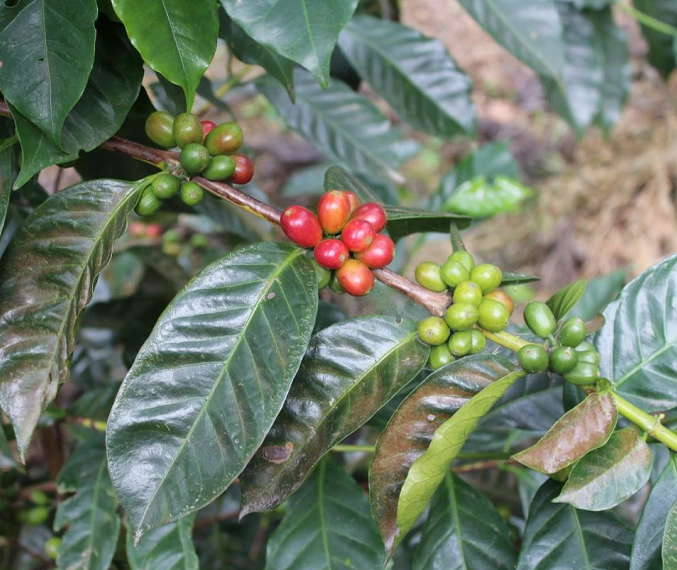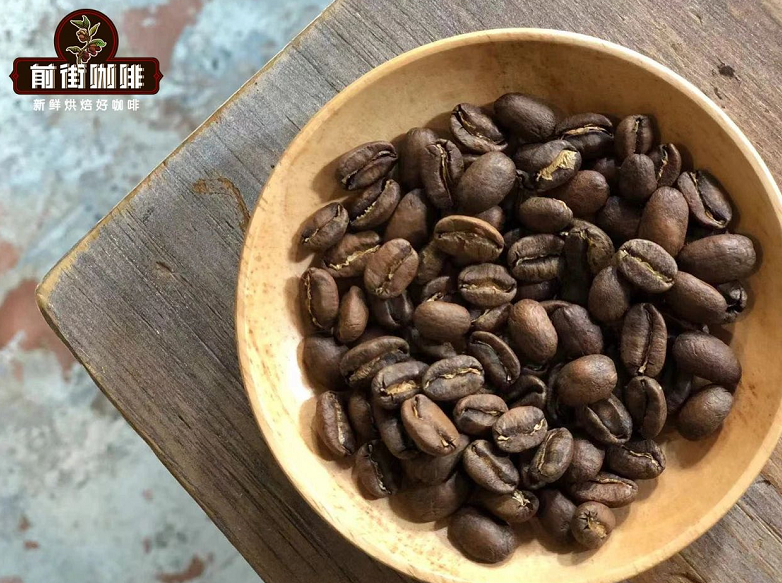How do you drink Rosa coffee beans? How to make hand-brewed coffee from different producing areas of Rosa coffee beans?
How do you drink Rosa coffee? How to make hand-brewed coffee from different producing areas of Rosa coffee beans?
The charming and exquisite coffee flavor of Rosa coffee beans has been on the minds of many coffee fans. Due to the "picky" growing environment and low yield of the rose summer variety coffee tree, the price of the coffee tree with exquisite flavor is naturally "frighteningly expensive".
Rosa Geisha/Gesha, due to its pronunciation close to the Japanese word for "geisha-Geisha", is called geisha coffee in some areas. Although the flavor of Rosa coffee beans is exquisite, this elegant flavor comes from a specific growing environment. Rose summer varieties are very "picky" about the growing environment, and they are required to be planted in areas with high altitude, cloud shade or a large number of shade trees and fertile soil in order to have rich and charming flower fragrance, delicate and elegant fruit acid and tea-like sweet taste.

Why are the rose summer coffee beans at the Emerald Manor in Panama so expensive? First of all, the Jade Manor was the first to discover that the rose summer coffee beans have a charming floral fragrance, separated the rose summer varieties from many varieties in 2003 and took good care of them, and won the championship in the BOP raw bean competition in 2004, which made the rose summer coffee famous overnight and established the position of the Jade Manor in the boutique coffee industry. The second is the high altitude of the Jade Manor, rich volcanic soil and planted in the windbreak forest. The Panamanian rose summer variety came from Ethiopia ~ was discovered in the rose summer forest of Ethiopia in 1931 and then sent to the Coffee Institute in Kenya, introduced to Uganda and Tanzania in 1936, Costa Rica in 1953 and Panama in 1970. When it was introduced to Panama, people were unwilling to cultivate it because of its low yield, so it was planted in a windbreak forest to protect other coffee trees. In addition to the jade manor in Panama, rosy summer coffee is also grown in other producing areas, but because the elevation is not as high as the emerald manor, some Panamanian rose summer flavor is not so exquisite. But! The soil in Panama is covered with volcanic ash, so the land is very fertile. Through the cup test in the front street, many Rosa coffee beans from different producing areas of Panama will have a clear floral fragrance, bright and clean acidity and honey aftertaste, with rich layers. Through the cup test, we can know that the Panamanian rose summer coffee beans have a rich sense of hierarchy, so the concentration can be slightly reduced when brewing, so that the flavor of each level is clearer. It is recommended that the cooking ratio is 1: 15. 5-1. The coffee beans are brewed at 90-91 degrees Celsius, and the coffee bean is grinded with medium and fine grinding (the screening rate of Chinese standard No. 20 sieve is 77%).
Costa Rican rose summer coffee beans
Judging from the above-mentioned transmission route of rose summer varieties, Costa Rica began to plant rose summer earlier than Panama. Costa Rican coffee plantations provide fertile volcanic ash, mild and suitable temperatures and stable and abundant rainfall for the volcanic terrain, which are all important factors in the production of excellent coffee in Costa Rica. Since Panama rose summer became famous overnight, many coffee farms in Costa Rica have also begun to grow rose summer coffee beans, especially in the Tara Zhu producing area. The rich microclimate in the Tarazhu producing area makes the temperature difference between day and night up to 26 degrees Celsius. The huge temperature difference between day and night can make the coffee fruit better accumulate nutrients and produce a more delicate flavor. Through the cup test of Costa Rican rose summer coffee beans in the front street, it is found that its flavor tone is similar to that of Panama, with floral fragrance, high acidity of lemon, juice-like taste and relatively full overall taste. Through the cup test, we can know that the overall fullness of Costa Rican rose summer coffee beans, so it is recommended to use 91-92 degrees Celsius, the proportion of powdered water at 1:15, and the medium and fine grinding of coffee beans (the screening rate of Chinese standard No. 20 sieve is 80%).
Rose summer coffee beans from Ethiopia
The most representative rose summer coffee in Ethiopia comes from the rose summer village manor, which is a rare manor dominated by planting rose summer varieties. Because the rose summer variety planted in Rosa Village belongs to the wild rose summer variety, it is close to the plant and flavor of the familiar Panamanian rose summer variety, but on the whole it is still not much like the Panamanian rose summer coffee flavor. In order to distinguish between the two kinds of rose summer, the rose summer variety of Ethiopia was named "Gori Rose Summer" (because the variety was found in the Gori Rose Summer Forest). Qianjie through the cup test rose summer coffee beans, coffee flavor to yellow drupe (yellow peach) flavor as the main tone, with medium-to-high sweetness, good performance of batches and even taffy-like flavor. Through the cup test, we can know that Esser's rose summer coffee beans have a very good sense of sweetness, so when brewing and cooking, we can use 91-92 degrees Celsius to stimulate more sweetness. the grinding thickness of coffee beans is recommended to be medium and fine grinding (the screening rate of Chinese standard No. 20 sieve is 80%). The recommended cooking ratio is 1:15.
Colombian rose summer coffee beans
It is only in recent years that Colombia began to introduce Rosa coffee beans from Panama. Colombian coffee growers are mostly located in mountain areas, with rich microclimates, mild temperatures and flavored water resources that provide a good growing environment for coffee. The front street tests Columbia's rose coffee beans through a cup, with floral aromas, soft acidity of oranges / mandarins, honey sweetness, and a tea-like finish. Through the cup test, we can know that Colombian coffee beans are soft and balanced as a whole, so it is recommended to boil coffee beans at 90-91 degrees Celsius in the proportion of powdered water at 1:15, and medium and fine grinding is recommended for coffee beans (the screening rate of Chinese standard 20 sieve is 78%).

Important Notice :
前街咖啡 FrontStreet Coffee has moved to new addredd:
FrontStreet Coffee Address: 315,Donghua East Road,GuangZhou
Tel:020 38364473
- Prev

What is the ratio of water powder to coffee made by ice hands? Ice hand to make coffee with ice first or after? Delicious ice hand rush teaching.
A cup of refreshing and greasy iced coffee is very pleasant. Common iced coffee includes ice drop coffee, cold extract coffee, iced American coffee and so on. Ice hand brewing is also one of the most popular iced coffee. Hand-brewed coffee, as the main popular boutique coffee, is one of the main products of coffee shops.
- Next

How do I play latte milk foam? What is the thickness of espresso milk foam? Beginner's Milk foam course
Playing milk foam is a hurdle that many milk coffee players can't get around. So, the front street even the blackboard has been moved out, hand-in-hand to teach everyone how to deal with smooth and delicate milk foam. Why do you need milk foam? In the beginning, the latte simply heated the milk and then poured it into the milk and mixed it. There was no milk foam, and the milk foam was big when it began to appear.
Related
- Beginners will see the "Coffee pull flower" guide!
- What is the difference between ice blog purified milk and ordinary milk coffee?
- Why is the Philippines the largest producer of crops in Liberia?
- For coffee extraction, should the fine powder be retained?
- How does extracted espresso fill pressed powder? How much strength does it take to press the powder?
- How to make jasmine cold extract coffee? Is the jasmine + latte good?
- Will this little toy really make the coffee taste better? How does Lily Drip affect coffee extraction?
- Will the action of slapping the filter cup also affect coffee extraction?
- What's the difference between powder-to-water ratio and powder-to-liquid ratio?
- What is the Ethiopian local species? What does it have to do with Heirloom native species?

